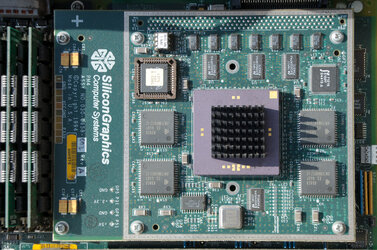- Joined
- Apr 6, 2011
- Location
- OH-IO
I recently acquired several SGI Indigo / Indigo 2's and I have no idea how to remove the processor from the card it is attached to. I found documentation that shows how to remove the actual module, but not how to separate the processor from the chipset module. It looks like the image below, only w/o the tiny heat sink on it. I removed the screws that hold the boards together, but I don't know where to go from there. Anyone have a clue?

